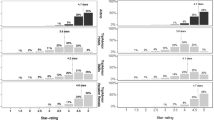Abstract
Peer-to-Peer (P2P) technology has experienced its great popularity for resource sharing in current network services. However, lacking of prior experience and knowledge about other peers’ reputation, P2P suffer from malicious behaviors launched by malicious peers. Developing effective strategies to establish trust model for the P2P system is a good way to address this problem. In this paper, we propose a novel topological potential weighted community-based recommendation trust (TPCommuTrust) model architecture, which is based on topological potential weighted community credential to score and rate peers’ previous data transactions. Contributed by topological potential, which characterizes repercussion effect between peers, the reputation model of the peers is created. The unique and efficient mechanism is proposed to perform data transaction based on credentials intra and inter-community. Moreover, how TPCommuTrust can provide an access control against malicious peers is illustrated as well. Simulation results show that TPCommuTrust model is robust and highly efficient to identify malicious nodes.










Similar content being viewed by others
References
Li HW, Lin XD, Yang HM, Liang XH, Lu RX, Shen XM (2013) EPPDR: an efficient privacy-preserving demand response scheme with adaptive Key evolution in smart grid. IEEE Trans on Parallel and Distrib Syst. doi:10.1109/TPDS.2013.124
Li HW, Lu RX, Zhou L, Yang B, Shen XM (2013) An efficient Merkle tree based authentication scheme for smart grid. IEEE Syst J. doi:10.1109/JSYST.2013.2271537
Li HW, Liang XH, Lu RX, Lin XD, Shen XM (2012) EDR: An Efficient Demand Response Scheme for Achieving Forward Secrecy in Smart Grid. In Proceedings of IEEE Global Communications Conference Anaheim, CA, pp 929–934
Li HW, Dai YS, Tian L, Yang HM (2009) Identity-based authentication for cloud computing. Lect Notes Comput Sci 5931:157–166
Singh A, Liu L (2003) TrustMe: Anonymous management of trust relationships in decentralized P2P systems. In: Proceedings of IEEE 3rd International Conference on Peer-to-Peer Computing, Linkoping, Sweden, pp 142–149
Damiani E, Vimercati SDCD, Paraboschi S, Samarati P (2003) Managing and sharing Servents’ reputations in P2P systems. IEEE Trans on Knowl and Data Eng 15(4):840–854
Scott J (2000) Social Network Analysis: A Handbook. SAGE Press, 2nd edn.
eBay (2002) http://www.ebay.com/
Aberer K, Despotovic Z (2001) Managing Trust in a Peer-to-Peer Information System. In: Proceedings of The 10th Conference on Information and Knowledge Management, Atlanta, pp 310–317
Feldman M, Padimitriou C, Chuang J, Stoica I (2006) Free-riding and whitewashing in peer-to-peer systems. IEEE Sel Areas in Commun 24(5):1010–1019
Saroiu S, Gummadi PK, Gribble SD (2002) A Measurement Study of Peer-to-Peer File Sharing Systems. In Proceedings of Multimedia Computing and Networking, San Jose
Douceur J (2002) The Sybil Attack. In Proceedings of Int. Worksh. Peer-To-Peer Systems, Cambridge
Marti S, Garcia-Molina H (2006) Taxonomy of trust: categorizing p2p reputation systems. Comput Netw 50(4):472–484
Agarwal G, Bawa M, Ganesan P, Garcia-Molina H, Kenthapadi K, Motwani R, Srivastava U, Thomas D, Xu Y (2005) Two Can Keep A Secret: A Distributed Architecture for Secure Database Services. In Proceedings of Second Biennial Conference on Innovative Data Systems Research, Asilomar, pp 186–199
Park JS, An G, Chandra D (2007) Trusted P2P computing environments with role-based access control. IET Inf Secur 1(1):27–35
Wu HF, Shi CJ, Chen HG, Gao CS (2008) A Trust Management Model for P2P File Sharing System. In Proceedings of International Conference on Multimedia and Ubiquitous Engineering, Busan, pp 41–44
Kamvar SD, Schlosser MT, Hector Garcia-Molina (2003) Eigenrep: Reputation management in P2P networks. In: Proceedings of Twelvth International World Wide Web Conference, vol. 1, pp 123–134
Wang Y, Vassileva J (2003) Trust and reputation model in Peer-to-Peer networks. In Proceedings of The Third IEEE International Conference on Peer-to-Peer Computing, Linkoping, Sweden, pp 150–158
Lee S, Sherwood R, Bhattacharjee B (2003) Cooperative peer groups in NICE. In: Proceedings of the IEEE INFOCOM, vol.2 pp 1272–1282
Xiong L, Liu L (2004) PeerTrust: supporting reputation-based trust for peer-to-peer electronic communities. IEEE Trans Knowl and Data Eng 16(7):843–857
Fu JM, Xiong HJ, Li Z, Zhang HG (2008) PerformTrust: Trust Model Integrated Past and Current Performance in P2P File Sharing Systems. In Proceedings of IEEE/ACS International Conference on Computer Systems and Applications, Doha, pp 718–725
Tan YH, Lü K, Lin YP (2012) Organisation and management of shared documents in super-peer networks based semantic hierarchical cluster trees. Peer-to-Peer Netw Appl 5:292–308
Liang J, Kumar R, Ross KW (2005) The KaZaA Overlay: A Measurement Study. Computer Networks Journal
Gan WY, Li DY, Wang J (2006) An hierarchical clustering method based on data fields. J Electron 34(2):258–262
Gan WY, He N, Li DY, Wang J (2009) Community discovery method in networks based on topological potential. J Softw 20(8):2241–2254
Wang T, Han YN, Wu J (2010) Evaluate Nodes Importance in Directed Network Using Topological Potential. In Proceedings of International Conference on Information Engineering and Computer Science, Wuhan, pp 1–4
Zhang JP, Li H, Yang J, Bai J, Chu Y (2011) Network Soft Partition Based on Topological Potential. In Proceedings of International Conference on Communications and Networking, Harbin, pp 725–729
Oversim (2010) http://www.oversim.org/wiki
Acknowledgment
The work is supported by the NSFC (Grant No. 61032003, 61271172), RFDP (Grant No. 20120185110030, 20130185130002), SRF for ROCS, SEM and Sichuan International Corporation Project (Grant No. 2013HH0005).
Author information
Authors and Affiliations
Corresponding author
Rights and permissions
About this article
Cite this article
Han, Q., Wen, H., Ren, M. et al. A topological potential weighted community-based recommendation trust model for P2P networks. Peer-to-Peer Netw. Appl. 8, 1048–1058 (2015). https://doi.org/10.1007/s12083-014-0288-9
Received:
Accepted:
Published:
Issue Date:
DOI: https://doi.org/10.1007/s12083-014-0288-9




